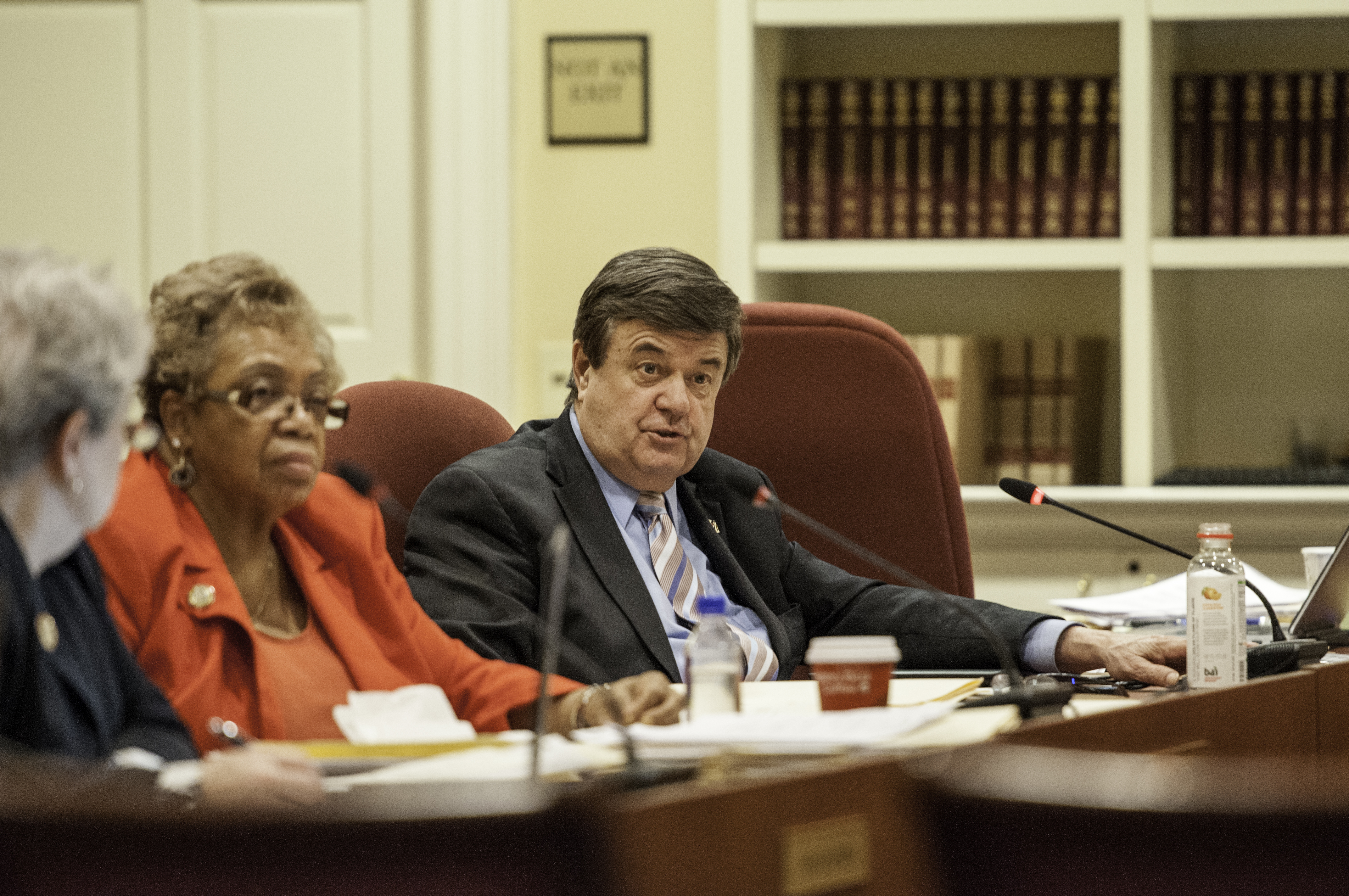@BryanRenbaum
Sen. Ron Young (D-Frederick) emphasized to a panel of Maryland lawmakers on Tuesday the need for legislation requiring the state’s public elementary schools to set aside at least two-and-a-half hours each week for students to engage in daily physical activity.
“The bill asks that each student in elementary school have at least 90 minutes of physical education during the week — which is just three half-hour classes — plus 60 minutes of recess — which is just 12 minutes a day — for a total of 150 minutes each week of developmentally appropriate and moderate to vigorous physical activity,” Young said at a Senate Education, Health and Environmental Affairs Committee hearing in Annapolis. He is sponsoring the legislation.
Young said the growing trend of childhood obesity is a major impetus for introducing the legislation.
“We’re talking about a pandemic now in this country…obesity. I just saw something recently that they’re predicting that over half of Americans are going to be obese. And it is one of the largest causes of death and it may become the largest. It’s also a reason for our huge health bills in this country — much larger than anywhere else.”
Young said physical activity not only improves the health of children but also can improve their performance inside the classroom.
“Children need physical activity, I think even more so than back when I was teaching because more and more they’re on their phones, their computers — and they’re just not going out for exercise. And aside from health, other good things that come from it: improved test scores and academic achievement and improved behavioral problems.”
Jane Clark, who is the former dean of the University Maryland School of Public Health in College Park and a professor of kinesiology at the university, said sedentary behavior poses the same health risks as smoking.
“Sitting is the new smoking. That is, we now know that sitting — our sedentary behavior — is now ahead of smoking. We should all be in favor of something that prevented children from smoking in schools — so why not allow them to do something that would allow them to be more physically active?
“They spend at least six hours a day seated. And the people in the classroom — the teachers — don’t want them to move around. The teachers want them to be in their seat. So we need to provide opportunity for them.”
Clark, like Young, said physical activity helps students perform better in the classroom.
“Physical activity is good for your brain. It actually leads to better academic skills. And there’s quite a lot of academic and scientific literature that would support that argument. And, so, both in physical education — particularly academic skills in the math area and reading — are improved with children who have physical education.”
Jill Whitall, professor emerita at the University of Maryland School of Medicine in Baltimore, praised the legislation for combining physical activity with physical education. Whitall said the two are not mutually exclusive.
“Physical education is not the same as physical activity. We all know the benefits of 60 minutes of physical activity for children…but what about physical education itself?…This bill is good because it has physical activity targeted for the recess and physical education targeted for the physical education part.”
The goal of the legislation, SB542 and HB516, according to its text, is that “each public school student in elementary school be provided a daily program of at least 150 minutes each week of developmentally appropriate, moderate-to-vigorous physical activity that includes recess and at least 90 minutes each week of physical education.” It requires that the “program of physical activity for a certain category of student be consistent with the student’s Individualized Education Program.”
Members of the committee did not ask the panel any questions about the legislation.
The committee chair, Sen. Cheryl Kagan (D-Montgomery) asked Young if he believes he could make the case to local school boards to implement the requirement.
Young said he believes the benefits of the requirement for students speak for themselves.
“They need it for their health. It improves their behavior. And it improves their academic progress.”




Recent Comments